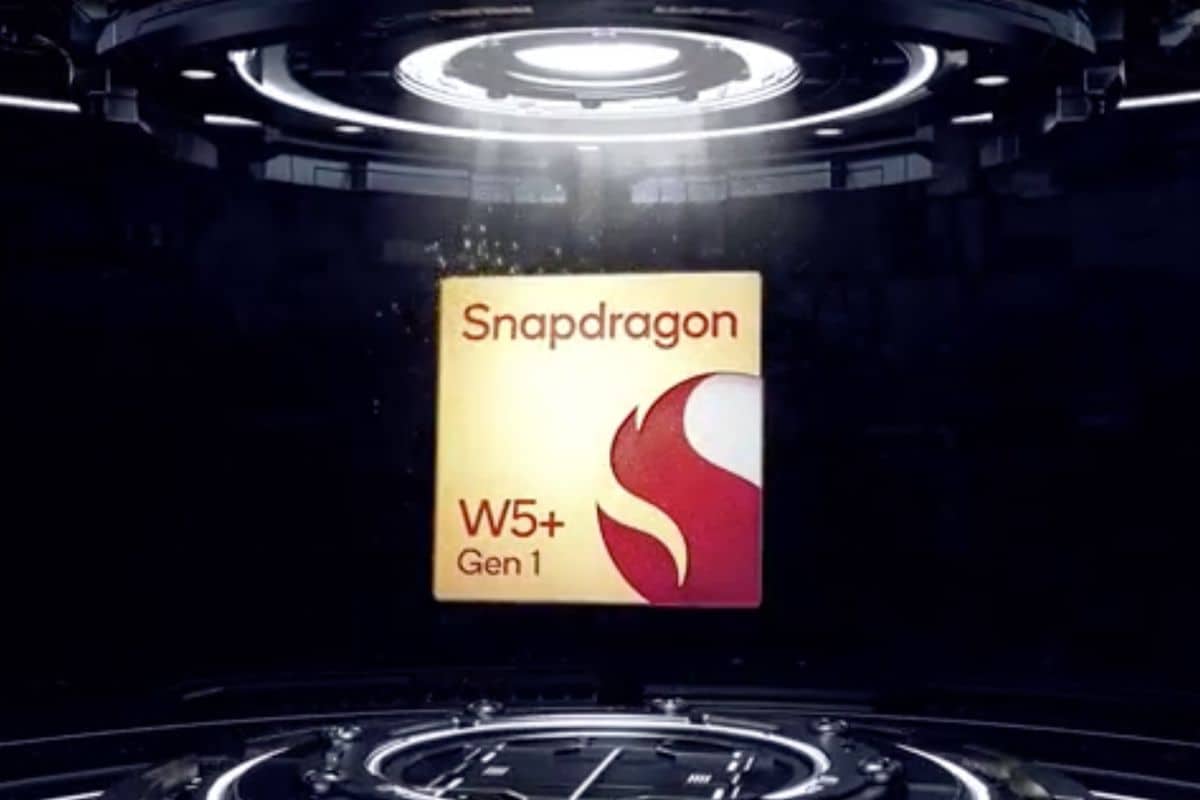While Qualcomm’s Snapdragon Wear chips power the vast majority of current Wear OS watches, the platform itself has never really delivered. Thus far, Snapdragon Wear chips have been repurposed mobile processor designs built on outdated tech and are a big reason why Wear OS watches have been so lackluster. But today, Qualcomm is launching an overhauled wearables platform called Snapdragon W5 Plus and W5. And this time, it seems like Qualcomm means business.
For starters, the company is ditching the Snapdragon Wear branding. That might seem irrelevant, but it’s more like a symbolic fresh slate. Instead, the new W5 Plus and W5 chips will be folded under the main Snapdragon umbrella. The W5 Plus is envisioned for premium smartwatches, while the W5 is meant for simpler devices like smartwatches for kids, fitness trackers, and enterprise devices. And, according to Qualcomm’s global head of smart wearables, Pankaj Kedia, both chips are specifically built for wearable devices. As in, they’re not repurposed smartphone chips.
Spec-wise, the platform keeps the hybrid architecture featured in the Snapdragon Wear 3100 and 4100 chips. There’s the main processor for interactive tasks and an always-on coprocessor to help conserve battery. For the W5 Plus, Qualcomm is making a huge leap from 12nm to 4nm on the main chip and from 28nm to 22nm on the coprocessor. For context, Samsung’s Exynos W920, which powers the Galaxy Watch 4, uses 5nm process tech. Apple’s S7 chip for the Apple Watch Series 7 uses a 7nm process. This isn’t to say the W5 Plus is automatically better because it’s on 4nm — it’s more that Qualcomm is finally using current process tech like its peers.
With the W5 Plus platform, the always-on coprocessor powers features that were previously handled by the main SoC. They include audio, keyword detection for digital assistants, and notifications via low-power Bluetooth 5.3. Meanwhile, health tracking features like monitoring sleep and heart rate are also handled by the coprocessor. Kedia says the coprocessor can also support onboard machine learning, though we’ll have to see if and how companies make use of that.
Essentially, the main processor is only used for interactive features like calling, 3D watchfaces and animation, or GPS navigation. Qualcomm’s press release says the result is 50 percent longer battery life, double the performance, and a 30 percent reduction in size compared to the 4100 platform. According to Kedia, the W5 Plus platform should be able to deliver multi-day battery life in some cases — which is something a Wear OS watch has yet to achieve. In a briefing, Kedia noted that Bluetooth watches with an always-on display sporting a 300mAh battery will see roughly 15 hours of additional battery. Because these numbers are based on Qualcomm’s own internal research, it’s impossible to say just yet how that’ll translate to, say, an actual Fossil smartwatch.
Kedia also told The Verge that the greater power efficiency and smaller chip size will enable manufacturers to create smaller, sleeker watches. If true, that’s big news for folks with smaller wrists. As companies include more advanced features, they also tend to add bigger batteries to compensate for the additional power drain. Sure enough, smartwatch sizes have slowly but steadily increased over the years. Case in point, a larger Samsung Galaxy Watch 5 Pro is all but confirmed.
But perhaps the biggest change is there’ll hardly be a wait before the first Snapdragon W5-powered watches hit shelves. Oppo says it’ll be the first to launch a watch on the W5 platform with the Oppo Watch 3 in August. Meanwhile, Mobvoi says its next TicWatch will launch this fall with the W5 Plus chip.
That’s a major shift from the past. For instance, the Snapdragon Wear 3100 platform was announced in 2018, but we didn’t see most wearable makers adopt the SoC until fall 2019. The wait was even worse with the Snapdragon Wear 4100 platform. That was announced in summer 2020, but only two smartwatches featured it a year after launch. Even now, there are only a handful of 4100-powered smartwatches on the market.
Wear OS 3 hasn’t had the smoothest start, and we still don’t have a true idea of how it’ll run on a non-Samsung smartwatch. (The Samsung Galaxy Watch 4 lineup is the only widely available Wear OS 3 smartwatch at the moment.) The first non-Samsung smartwatch to run Wear OS 3 is the prohibitively expensive Montblanc Summit 3, but that just launched and runs on a last-gen 4100 chip. Meanwhile, it’s rumored the forthcoming Google Pixel Watch will be powered by an older Samsung chip. So really, we won’t know how a Wear OS 3 watch powered by a current Qualcomm chip can perform until Mobvoi’s W5 Plus-powered TicWatch arrives this fall.
The transition to Wear OS 3 was always going to be rocky, but it also looks like the pieces may be starting to fall into place. Last year, Samsung and Google began tackling the software side of the equation by creating a unified software platform. Now, Qualcomm seems to be following up with next-gen hardware. Then again, Qualcomm has failed to deliver before. Still, between the massive leap in process tech, the rebrand, and shortened wait time to market — maybe this time Qualcomm will finally get it right.

